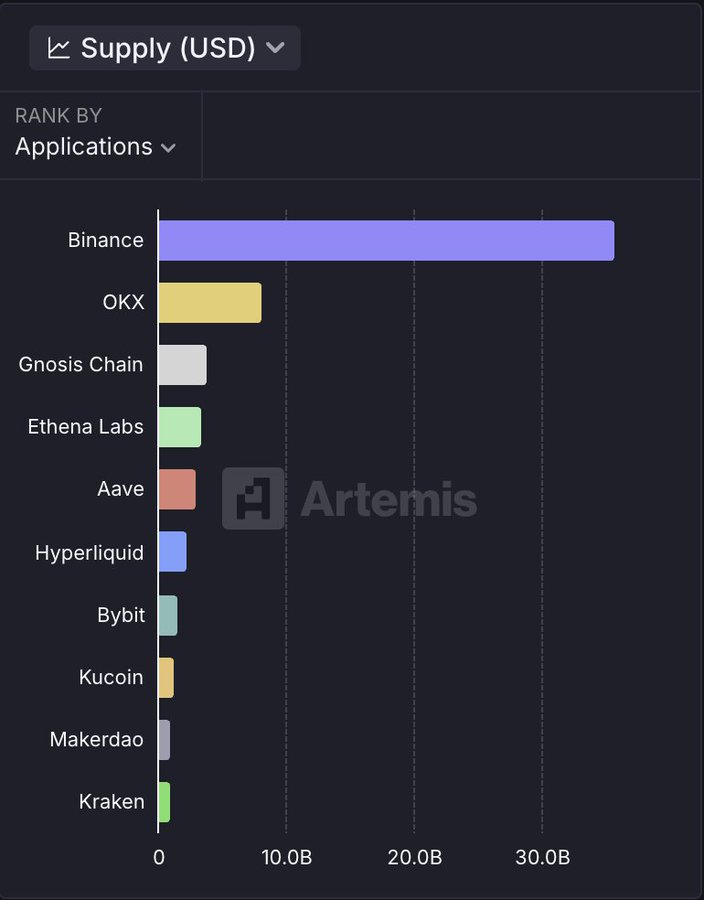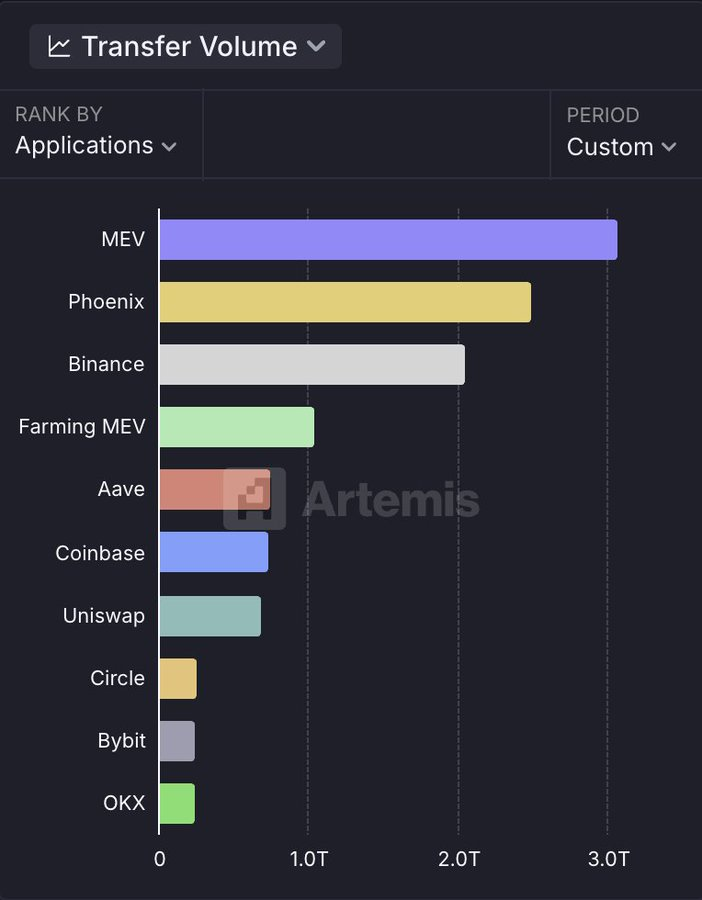The stablecoin market structure has changed: USDC share doubles, rookie USDe emerges

Reprinted from panewslab
03/20/2025·2M
Compiled by: Yuliya, PANews
Stablecoins are reshaping the global financial system at an unprecedented rate. According to the "State Status of Stablecoins in 2025" report jointly released by Dune and Artemis, the stablecoin market has ushered in significant growth in the past year, with institutional adoption accelerating, decentralized stablecoins rising, and on-chain transaction activity continues to rise.
Market size and growth trend
As of February 2025, the supply of stablecoins has reached US$214 billion, with an annual transaction volume of US$35 trillion, which is twice the annual transaction volume of Visa. Market activity increased simultaneously, with the number of active addresses on the chain increasing by 53%, exceeding 30 million. Institutional funds are flowing in on a large scale, promoting the deep integration of traditional finance (TradFi) and the crypto market.

Changes in the dominance of USDC and USDT
Driven by the compliance process and market strategies, USDC and USDT still dominate, but market share has undergone subtle changes.
- USDC 's market value doubled to US$56 billion, mainly due to the regulatory approval of MiCA and DIFC, the joining of important strategic partners such as Stripe and MoneyGram, and the rapid expansion of global markets.
- The total market value of USDT has grown to US$146 billion, and it is still the largest stablecoin with market value, but its market share has declined, institutional adoption has declined, and its focus has gradually shifted to the P2P remittance market, consolidating its position in the global payment field.

The rise of decentralized stablecoins
In the decentralized finance (DeFi) ecosystem, the influence of decentralized stablecoins has increased significantly, and many emerging projects have achieved breakthrough growth.
- USDe (Ethena Labs) : The market value soared from US$146 million to US$6.2 billion, becoming the third largest stablecoin in the market. The key to growth lies in its innovative return strategy and Delta neutral hedging mechanism.
- USDS (MakerDAO) : MakerDAO has rebranded its brand as Sky and launched a compliant and friendly USDS with a market value of US$2.6 billion in February 2025. This adjustment enhances its competitiveness in the decentralized stablecoin market.

Capital flow and industry distribution
The liquidity trend of stablecoins reflects the positioning and competitiveness of different public chains in the market:
- Ethereum remains the main issuance platform for stablecoins, accounting for 55% of the supply share.
- Base and Solana have grown rapidly in terms of trading volume. Driven by the DeFi and Meme currency markets, they have become important on-chain ecosystems for stablecoin capital flow.
- TRON continues to occupy a central position in the global P2P payment and cross-border remittance market, especially in emerging markets, where stablecoins are widely used for payments and savings.

Most stablecoins liquidity is mainly concentrated in centralized exchanges (CEX), and trading volume is mainly driven by DeFi (DEX, lending, income mining), reflecting the efficient flow and innovation of funds.


Core role and future development
Stablecoins have become the key infrastructure for the crypto market, and are also promoting innovation in the traditional financial field. Industry experts are optimistic about the future development of stablecoins:
"Stablecoins are the lifeline of the crypto market and the superconductor of the financial system. They open up new markets and financial opportunities and drive innovations that were otherwise difficult to reach."
—— Rob Hadick, General Partner of Dragonfly
"Stablecoins have significant advantages in cross-border payments. I hope Base supports more local currency stablecoins, allowing global users to trade on-chain with familiar currencies and increase the popularity of blockchain technology."
——Neodaoist, Product Manager of Base
"The new generation of stablecoins must have market resilience. The core of USDe is the stability mechanism supported by earnings, ensuring that users can obtain reliable US dollar alternatives."
——Conor Ryder, Head of Research at Ethena Labs
“The flow of stablecoins depends on the quality of the infrastructure – low cost, fast transactions, and market demand. In Solana, Meme currency transactions have extremely high demand for liquidity and instant settlement, making stablecoins an integral part.”
——Andrew Hong, founder and data analysis expert at Herd
“TRON has become the preferred blockchain for stablecoin transactions, with daily transactions of billions of dollars. USDT has driven real economic activity on TRON, especially in emerging markets, and it has become a key tool for payments and savings.”
—— TRON DAO Community Spokesperson Sam Elfarra

